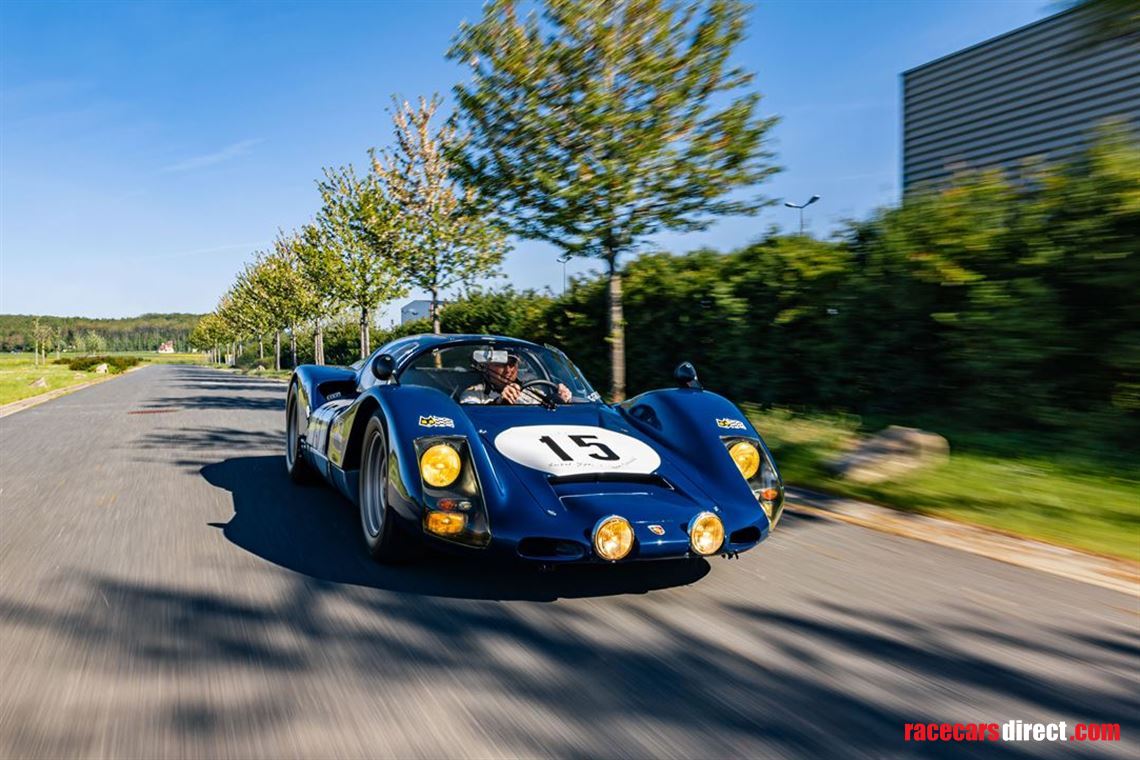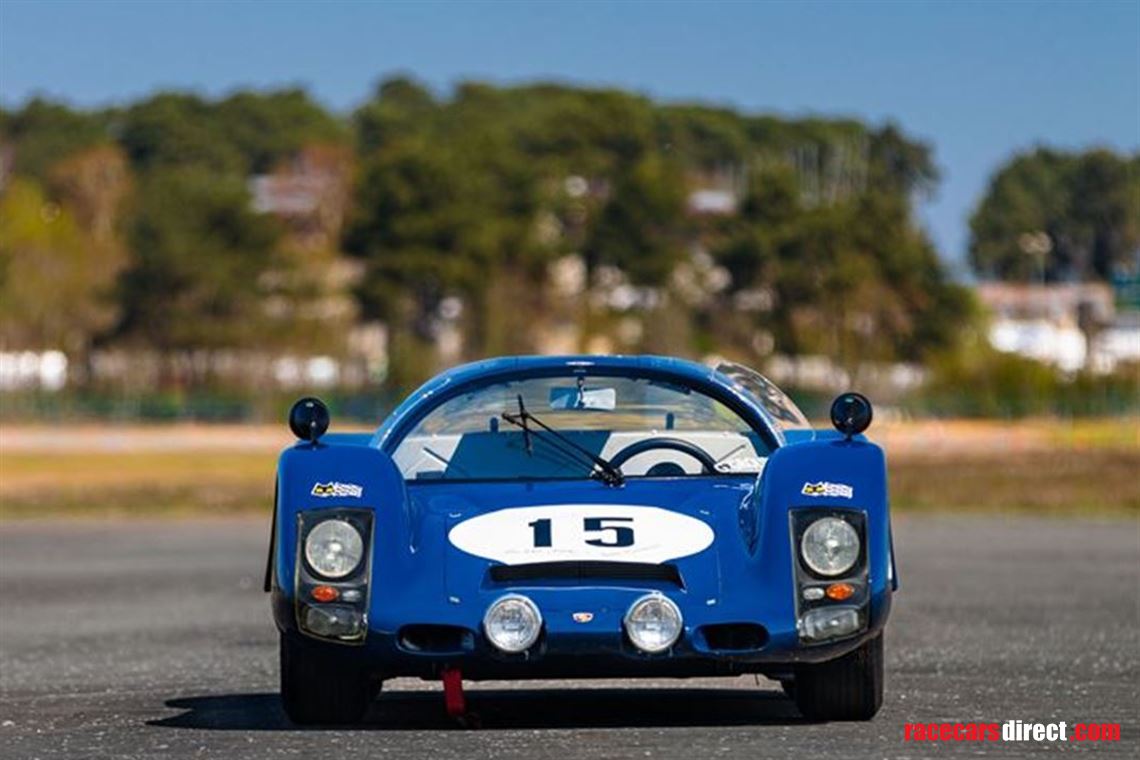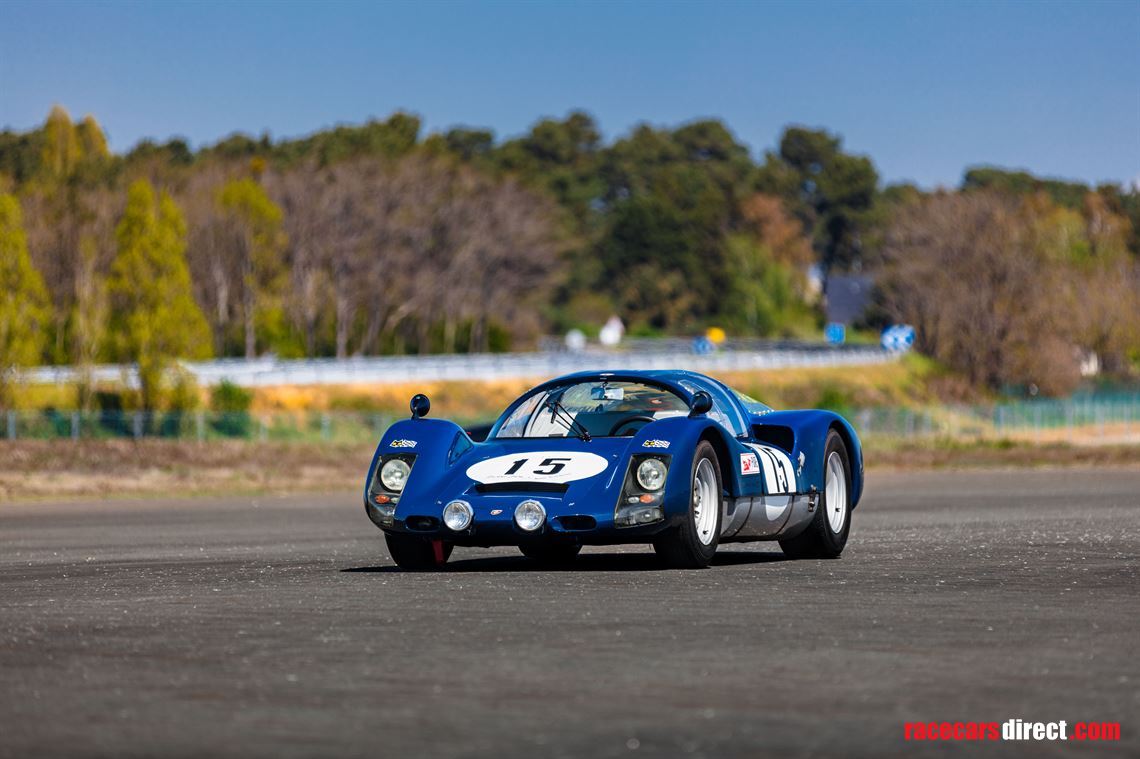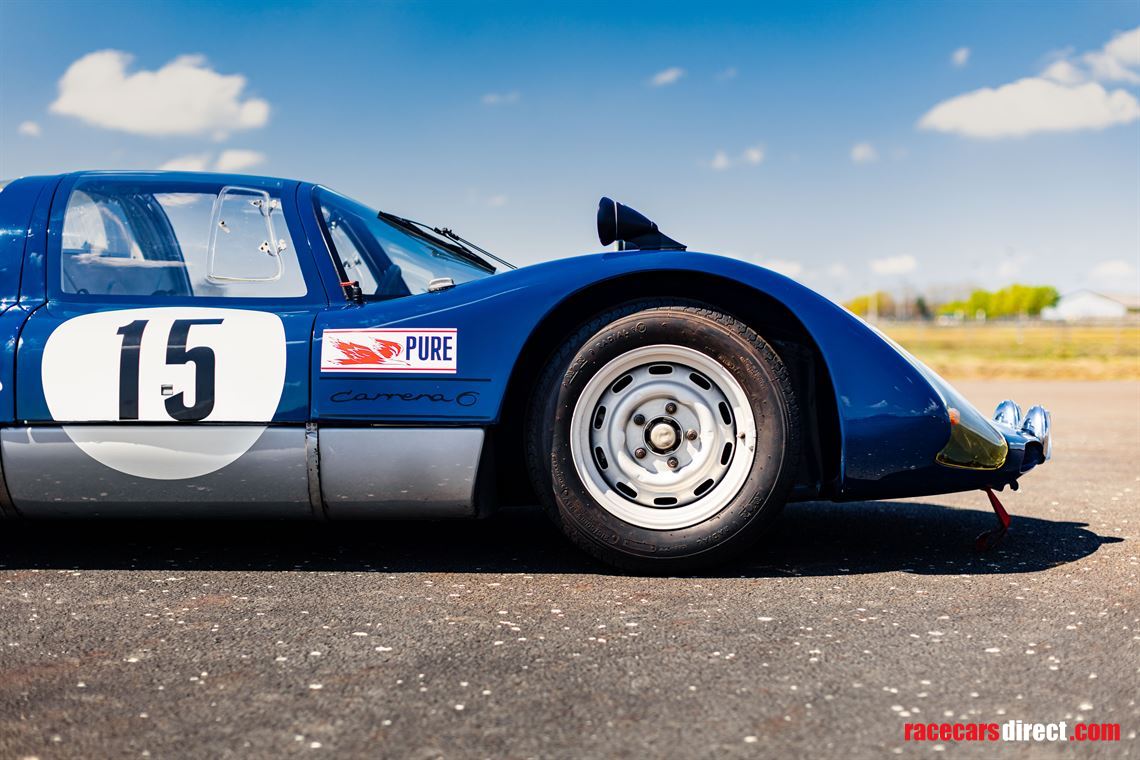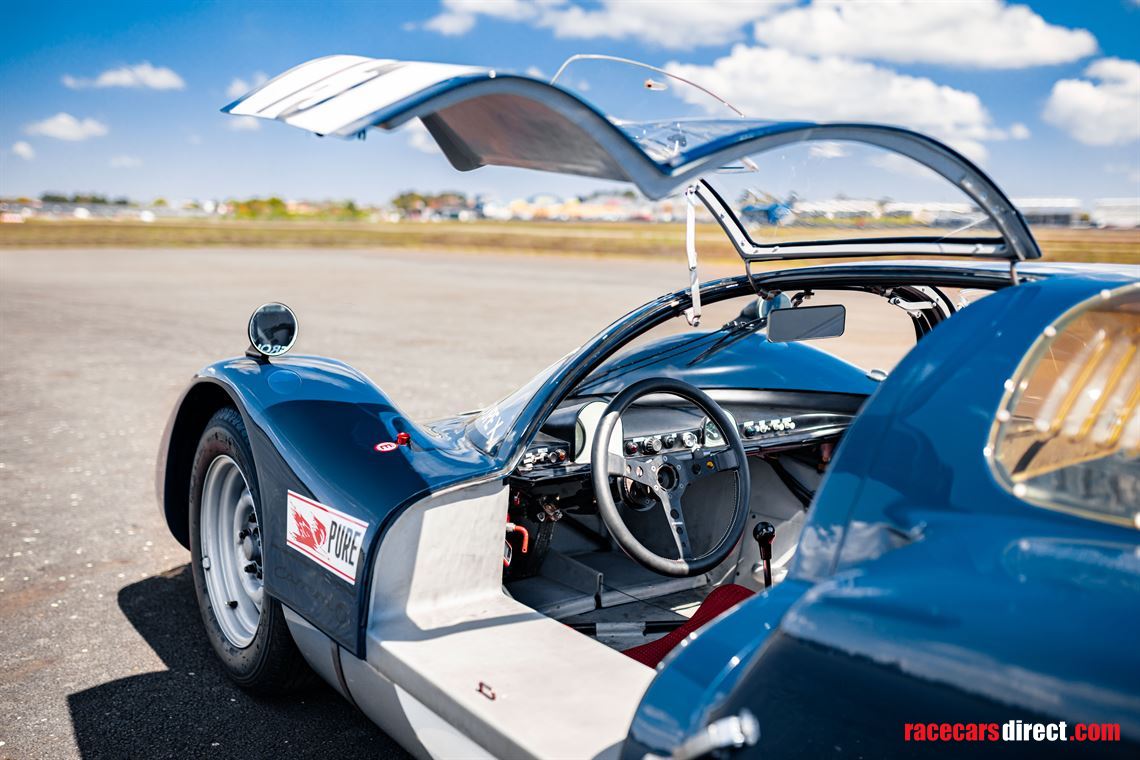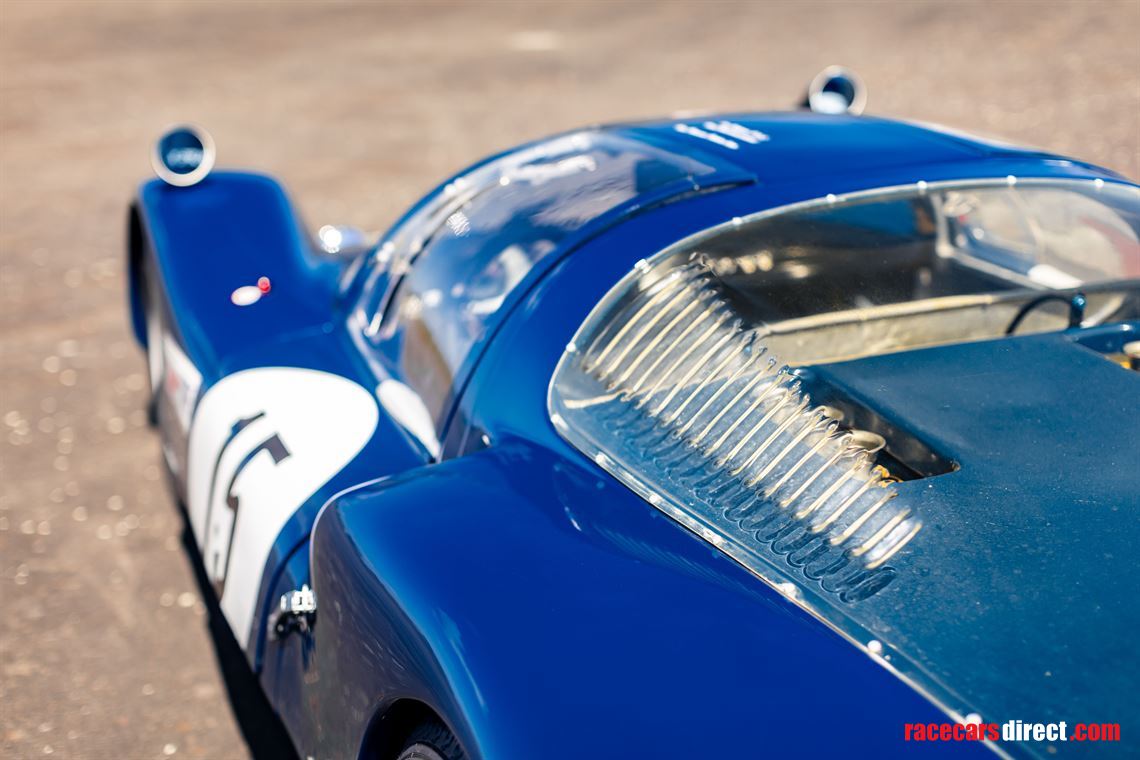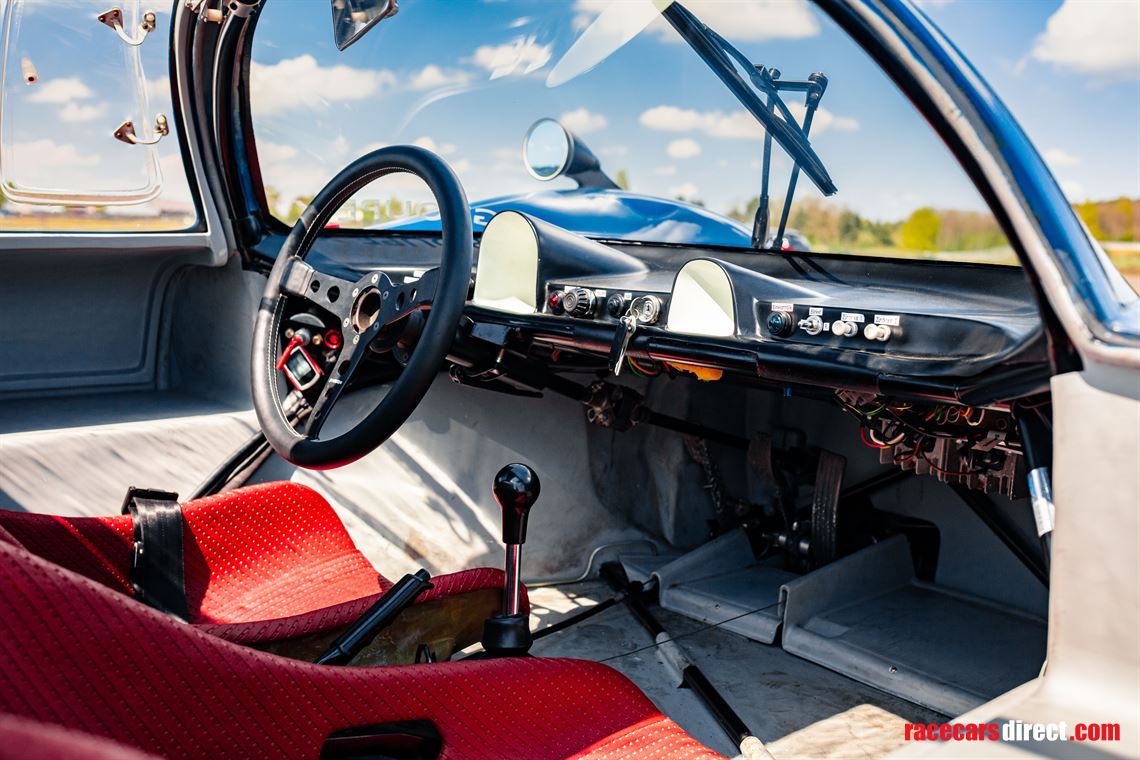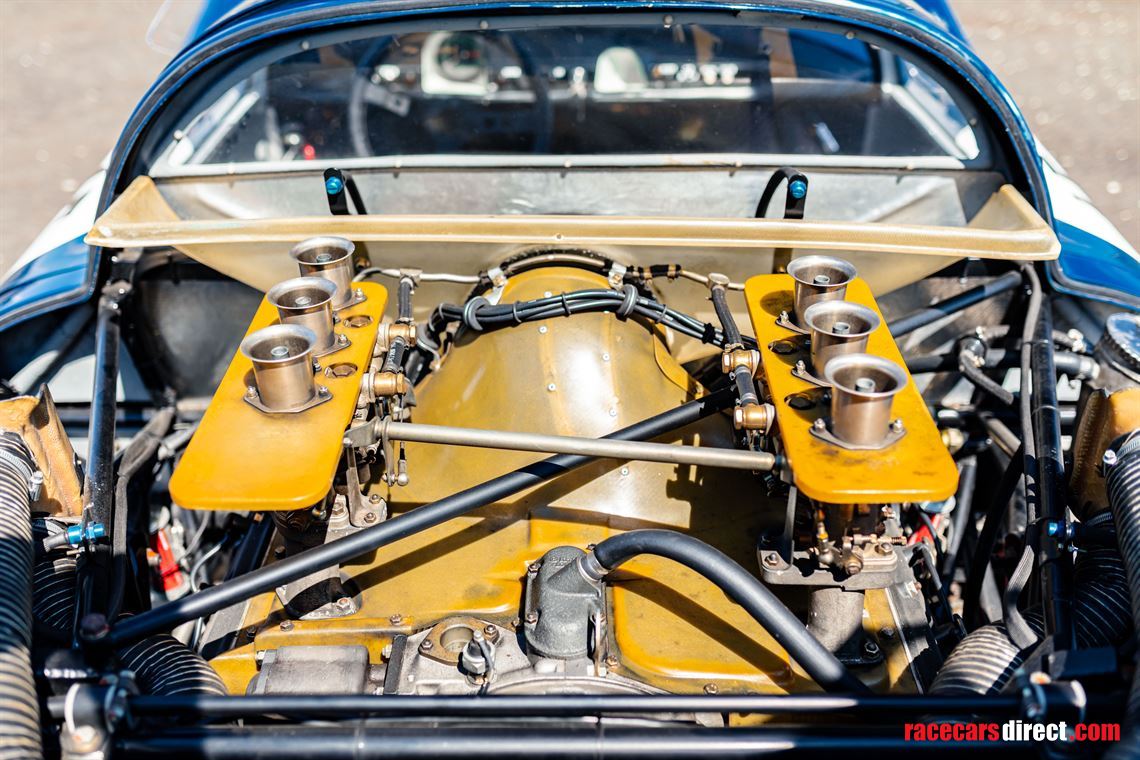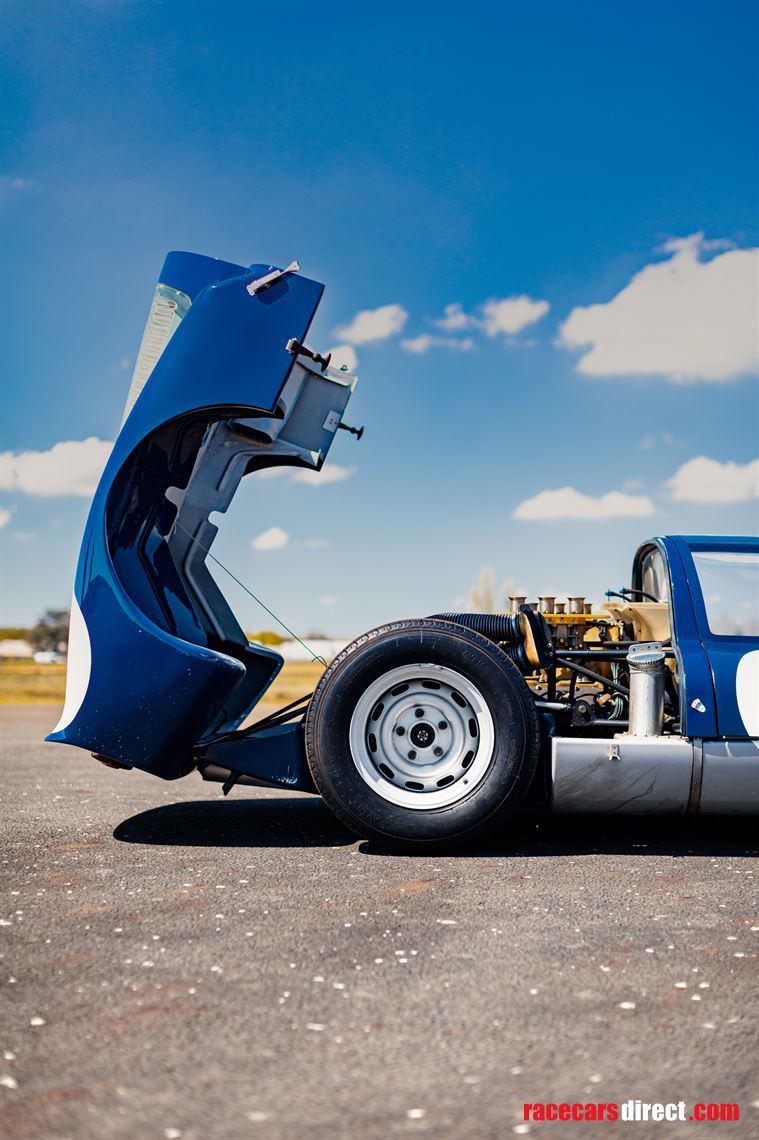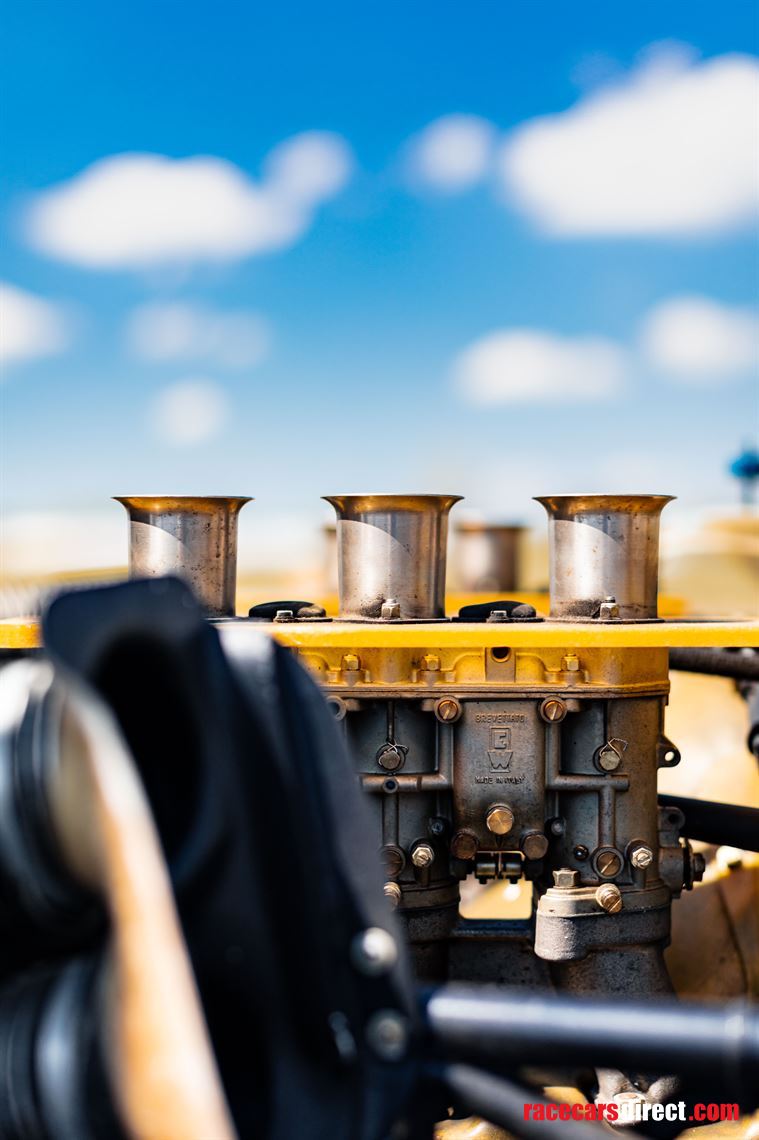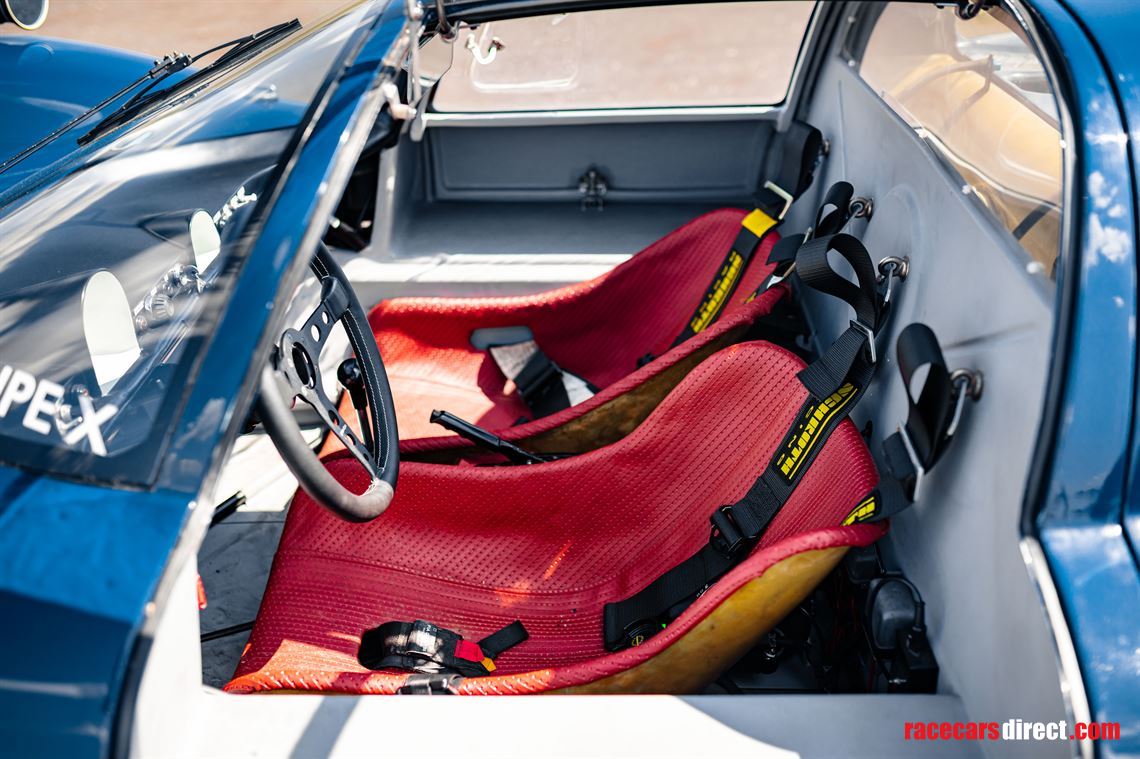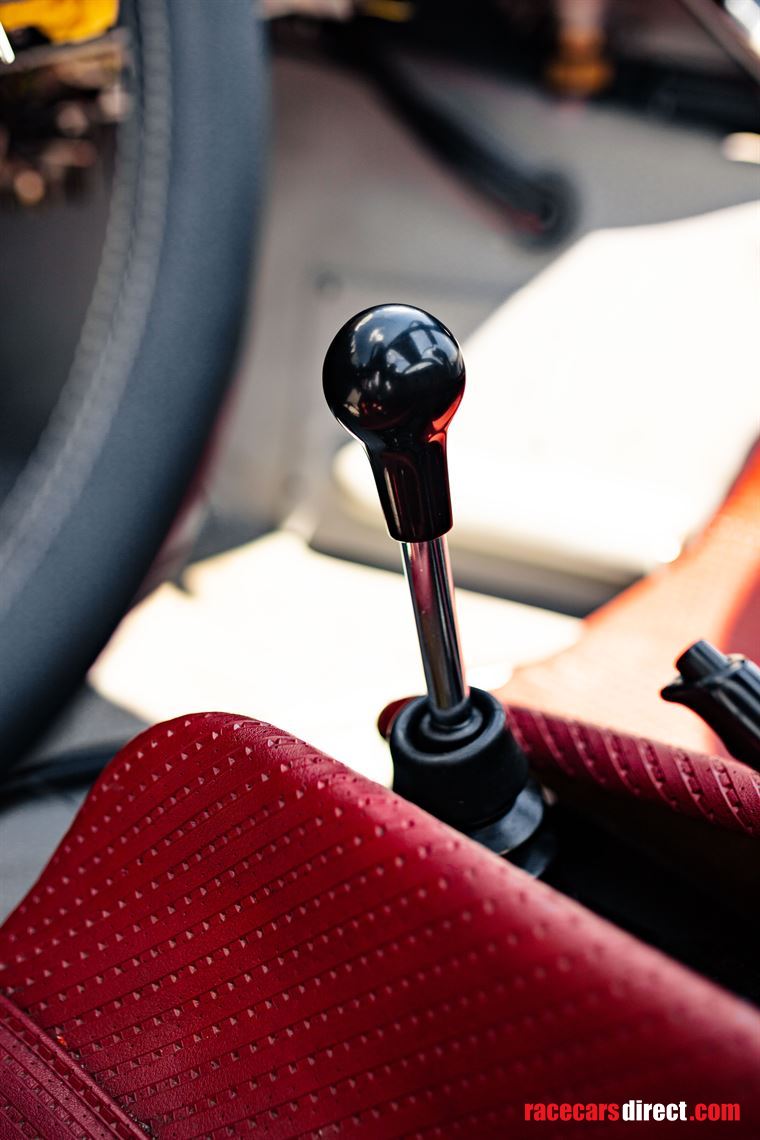Classic (non race) Cars

£ POA
1966 Porsche 906k - SOLD
This is now SOLD. Search for similar items.
Description:
Porsche 906k
CHASSIS N° 906-017 - ENGINE N° E - GEARBOX N° (not numbered)
COMPETITION CAR WITHOUT ROAD REGISTRATION
Auction estimate €1,000,000 - €2,000,00
One of the most historic factory 906s
The car is a factory prototype that was showcased to the press and also the first Type 906 model to compete in a championship.
6th place and class victory at the 1966 24 Hours of Daytona
The car's history is well-documented and it has been vetted by top specialists
The vehicle underwent a comprehensive and expert restoration process carried out by Freisinger Motorsport to restore it to a high level of quality
Eligible to participate in the most famous historic races
The undeniable prestige of the Porsche brand can be traced back to its illustrious history in motorsports. The Stuttgart-based automaker has always placed great emphasis on the tireless pursuit of technical innovation, a philosophy that has consistently imbued their production models with a winning edge and played an integral role in the construction of the brand’s legacy.
As a racecar, the Porsche 906 stands as the ultimate embodiment of this unwavering pursuit of performance and efficiency, hallmarks of the Zuffenhausen-based company. The 906 was the direct result of a regulation change in the world endurance championship that gave birth to a new «Sport» category, sandwiched between «Prototypes» and «Touring Cars» and requiring the production of a minimum of 50 cars. This car is undoubtedly infused with the genes of competition, its lineage tracing back to the 904, which paved the way for Porsche’s evolution in racing. Conceived and developed from 1963 onwards, the Porsche 904, known as the «Carrera GTS», was an entirely new design, save for its powertrain (at least initially), yet still enjoyed a distinguished racing career. The model’s evolution continued over the following two years, culminating in the release of the Spyder version, powered by an 8-cylinder engine, and featuring a new, lightweight tubular chassis replacing the older box-section design just prior to the end of the 1965 season. This car served as the foundation for the 906, particularly in terms of its chassis. The Porsche 906 is a coupé standing at less than one meter in height, its fiberglass-reinforced polyester body resting atop a steel tubular chassis, propelled by a centrally positioned, 2.0L, 210-horsepower, six-cylinder engine borrowed from the 911. This compact yet mighty machine, due to its remarkably low weight, is capable of reaching a staggering top speed of 280 km/h!
The Porsche 906, a stunning sports car developed in the mid-1960s, made an immediate impact on the world stage when it was presented to the press in January 1966. Its championship debut at the 24 Hours of Daytona in the United States on February 5 and 6 of that year was equally impressive, as it secured sixth place overall and won the race in the Prototypes category for vehicles with engines of less than 2,000 cubic centimeters. The car’s success continued with a remarkable fourth-place finish overall, along with a class victory in the same Prototypes category, at the 12 Hours of Sebring. The Porsche 906 continued to amaze in Europe, with an outstanding class victory at the 1 000 km of Monza, where it secured fourth, fifth, and seventh places overall in the Prototypes category for vehicles with engines of less than 2.0L. Just a few weeks later, the car continued its remarkable winning streak with its first overall victory at the 1966 Targa Florio.
The 906 also made a strong impression at the Nürburgring track, earning a respectable fourth place overall and a class victory in the Sport 2.0L category. In the same legendary year of 1966, the Porsche 906 achieved impressive results at the 24 Hours of Le Mans, competing against rivals with much larger engines, such as the Ford GT40 and Ferrari 330 P3. The car secured fourth, fifth, sixth, and seventh places overall while simultaneously winning the index classification and the victory in its category, the 2.0L Sports Cars. For this race, the manufacturer entered five cars in the competition, out of a total of six. Three of these cars were in the «long-tail» configuration, which was better suited for a fast circuit like Le Mans and allowed the Porsche 906 to approach 300 km/h. The other two were in the «short-tail» version, which didn’t prevent one of these classic 906s, number 58 driven by Klass/Stommelen, from finishing in 7th position, ahead of a Ferrari 275 GTB/C with its large 12-cylinder engine.
The Porsche 906 also achieved significant victories at the end of the 1966 season. In August, at Hockenheim in Germany, the three factory 906 S in the «long-tail» configuration finished at the top of the race. The same result occurred at the final event of the season, the 500 km of Zeltweg in Austria, in September, where a trio of 906 S finished in the top three positions of the race, followed by two other cars in 5th and 6th place. From its very first year, the Porsche 906 distinguished itself on the internationalcircuit, as well as many national races, demonstrating its outstanding efficiency despite an unostentatious yet flattering appearance that is both refined and delicate in its design. In the wake of the 906’s success, Porsche, always striving for more, developed the 910.
Also known as the «Carrera 10» or «906/10,» this car was fitted with both six-cylinder and eight-cylinder engines and enjoyed considerable success from late 1966 to 1967. However, its career was brief, as it was quickly overshadowed by the 907. The 906 was the car that made history.
This is especially true given that, despite the arrival of the 910, the 906 continued to be raced by private teams in 1967 at Daytona, Sebring, and Monza, always with good results. Porsche even re-entered the 906 in the 1967 24 Hours of Le Mans, where it won the Sport 2L class while coming 7th overall, just behind the more powerful and newer 907 LH and 910 in 5th and 6th positions respectively.
In addition to its dynamic qualities, the Porsche 906 boasts a highly advantageous silhouette, primarily dictated by the rules of aerodynamics. Its recognizable and iconic appearance is due in part to the «butterfly» doors providing access to the cockpit. The body, which rests on a tubular chassis - a characteristic innovation of the 906 - is nonetheless practical: the rear bonnet is mounted on a pivot to allow complete clearance of the engine and transmission for ease of maintenance. The streamlined headlights contribute to the car’s excellent aerodynamics while reinforcing the purity of its lines. The fluid yet powerful appearance of the 906, especially in its «short» version, is enhanced when viewed from the rear due to the wide fenders housing side louvers for engine cooling. The feeling one encounters while sitting in the driver’s seat of the 906 is a certain sense of balance. The controls are well designed and arranged in a relatively spartan but nonetheless aesthetic and comfortable environment, with both the seat and steering wheel being adjustable. Impressive without being intimidating, this balanced character of the 906 is also evident at the wheel. Exceptionally easy to handle for a racing car, with a smooth gearbox, it is at the same time very powerful without being brutal and boasts a supremely effective braking system with easily adjustable pressure – the fundamentals of Porsche are already well established. While the 906’s suspension was inherited from the 904 for economic reasons, its engine – derived from the 911 – is of a more specific design elaborated to further reduce weight. The 901/20-type engine of the 906, thanks to the use of lightweight metals and meticulous finishing work, is a true racing engine, weighing 54 kg less than the production 911 engine from which it is derived. Technically, it is a 1991 cc, six-cylinder boxer engine with overhead camshafts for each row of cylinders, each fed by an inverted triple-body Weber carburetor whose fuel supply can also be provided by a Bosch injection system. As an engine designed for racing, this twin-ignition and turbine-cooled engine is equipped with a dry sump lubrication system to lower the center of gravity and prevent the risk of oil starvation. It is paired with a 5-speed synchronized gearbox, whose maintenance is easy and the clutch controlled by cable.
Developed for endurance sports car racing under the leadership of Ferdinand Piëch, the head of the competition department at the time, the 906 race car was designed for endurance sports car racing, and also certified for road use. It competed in the FIA Group 4 class, and was an essential part of the brand’s racing history. The model in question is an exceptionally rare one, with only 65 units ever produced - Due to its popularity among independent drivers, a series of 15 additional cars were produced, despite the original plan being to manufacture only 50 units. The car being sold, identified by its chassis number 906-017, stands out among this highly limited edition. On the one hand, it is one of the two factory prototypes (along with the 906-016) produced in a series of only two. This obviously gives it a unique place in the history of the 906, since it served as the basis for numerous improvements and modifications to subsequent production cars. On the other hand, it is the most worthy representative of the model, as it was the chassis of the car that was officially presented to the press at the Zuffenhausen factory in January 1966, with the head of the competition department, Huschke von Hanstein, and drivers Hans Herrmann and Gerhard Mitter, as indicated by archives and reference works such as Jürgen Barth’s (winner of the 1977 24 Hours of Le Mans and former director of Porsche’s Sport-Client division) and Ulrich Trispel’s (historian) book on the 906. Furthermore, it was the first Porsche 906 entered by the brand in competition for the world manufacturers’ championship. As such, its class victory at the 1966 24 Hours of Daytona is all the more significant, especially considering that it had not yet been homologated in the Sport 2.0L category for which it was created. Driven by Hans Herrmann and Herbert Linge, car number 15 bearing the 906-017 chassis not only won the race in the less than 2.0L Prototypes category in which it competed, but also finished in 6th place overall, a very promising result for the future. Our car, 906-017, thus successfully passed the baptism of fire of the Porsche 906 in competition, adding historical interest to this particular specimen of an already extremely desirable car.
After its remarkable achievement, the 906-017 returned to Europe and participated in the pre-tests for the 1 000 km of Monza in April and the Targa Florio in May as a «mulet» for the factory team drivers. In September 1966, as was customary, Porsche dismantled 906-017 and sold it as a chassis without engine or gearbox to Mexico. The vehicle returned to the United States in the early 1970s and was acquired by a collector in California, who later sold it to another resident of the same state. It was not until 2008 that the renowned specialist Manfred Freisinger of Freisinger Motorsport retrieved the car.
Freisinger embarked on a restoration and reconstruction of the vehicle using all remaining original parts, returning it to its race configuration for the 1966 Daytona 24 Hours. An engine and transmission that were consistent with the type of the car were, of course, implanted into the vehicle on this occasion. 906-017 then passed through the hands of a German owner, followed by a Monegasque collector who specialized in the brand’s racing models, before the car eventually arrived in France a few years ago.
The quality of the work carried out at the Freisinger Motorsport workshop in the early 2010s is still evident over a decade later. Despite having been driven in historical competitions since, following the obtaining of a historic technical passport (PTH) from the FIA by Manfred Freisinger in 2011, this 906 is in very good condition and has been able to retain some of its original elements.
Moreover, 906-017 is presented today in its original blue color, with its short body configuration respected, and its chassis has not been modified from its production livery. The history of 906-017 is consistent with Porsche’s policy of only engaging new cars in important races and reselling the previous cars, which have little mileage, to private teams. What is more exceptional, however, is that it remained in its original state after being withdrawn from competition, jealously preserved by a few enthusiasts, before benefiting from a total restoration by one of the best specialists. From that moment on, it enjoyed a clear history, supported by archival documents, some of which are included in the car’s file. This dossier is quite significant, containing a complete copy of the car’s factory file, including all information about its technical characteristics and settings from that time. The file also includes a report on the history and expertise of the eminent Jürgen Barth, conducted in 2013, as well as reports from a French expert, a number of substantial invoices and German technical inspections, in addition to the 2011 PTH and an old German registration certificate. The 906-017 is a truly remarkable piece of history, not only because of its legendary status and unique place in the model’s history, but also due to its impressive performance. With a remarkable sixth-place finish at the Daytona 24 Hours, this vehicle has etched its name in the annals of motorsport, while simultaneously contributing to the development of Porsche’s racing expertise. It’s a unique opportunity for any discerning enthusiast to acquire a whole chapter of the brand’s history - one that is loaded with both emotional and historical value.

